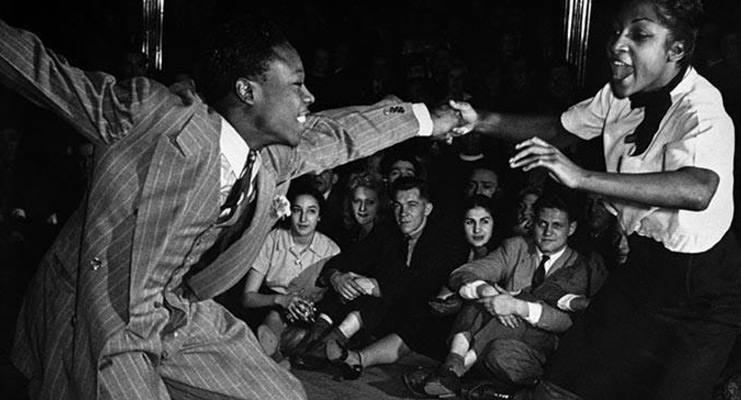In the 1920s, the Harlem neighborhood of New York City was a hotbed of musical and cultural activity. Among the most popular forms of entertainment was swing dancing. Swing dancers typically danced to jazz music, and the dances were often improvisational and energetic.
Swing dance is believed to have arisen from the fusion of several African-American dances, including Charleston, Lindy Hop, and Tap. These dances were brought to popularity by famous performers such as Josephine Baker and Duke Ellington. In the 1940s, Swing dance began to spread beyond the United States, becoming popular in Europe and Australia.
The most popular style of swing dancing was Lindy Hop, which originated in Harlem. Lindy Hop is characterized by its distinctive “swing out” move, in which dancers swing their partners out from the center of the circle. Lindy Hop was often danced in large groups, and it became a social activity and a form of exercise. The popularity of swing dancing in Harlem helped to make the neighborhood a vibrant and exciting place to live.
The following are some of the most popular forms of swing dancing:
Lindy Hop Swing Dance in Harlem New York
Lindy Hop is the original swing dance created in the 1920s and 1930s by African American dancers in Harlem, New York City. The Lindy Hop is danced to fast-paced jazz music and is known for its acrobatic moves. It’s also known for its “air steps,” in which dancers lift their partners off the ground while continuing to dance. Today, Lindy Hop is enjoyed by dancers of all ages and abilities worldwide.
West Coast Swing
West Coast Swing was created in California in the 1940s. It’s a slower, more laid-back style of swing dance, often danced to slower pop or R&B songs. West Coast Swing is known for its intricate footwork and stylish variations.
East Coast Swing
East Coast Swing is a simpler style of swing dance that developed on the East Coast of the United States in the 1940s. It’s perfect for beginners because it only requires basic step patterns and simple turns. East Coast Swing can be danced to a wide range of music genres, from big bands to rock ‘n’ roll.
Balboa
Balboa is a swing dance that originated in Southern California in the 1930s. The dance is characterized by a close connection between partners and fast footwork, which you can dance to fast or slow music.
Balboa is traditionally danced without turns, but many variants now include turns and other fancier footwork. While Balboa was once a very popular dance, it fell out of favor in the 1940s and 1950s.
However, the dance has recently seen a resurgence, with dancers rediscovering its technical challenge and unique style. Today, Balboa can be found being danced all over the world.
Jive
Jive is a fast-paced style of swing dance that originated in England in the 1950s. It’s similar to East Coast Swing but with more complicated footwork patterns and turns. Jive is usually danced to faster-tempo rock ‘n’ roll songs.
Shag
Shag dancing is a style of swing dance that originated in the 1920s. Unlike other forms of swing, shag is danced without lifting one’s feet off the floor. Instead, partners move around the dance floor by shifting their weight and tapping their toes. As a result, shag dancing is relatively easy to learn and can be done to various music tempos. Although it was once popular in the United States, shag dancing is now most commonly associated with the Carolinas.
Swing dancing became popular in Harlem nightclubs such as The Savoy Ballroom and The Cotton Club. These clubs were frequented by celebrities such as Fred Astaire, Ella Fitzgerald, and Duke Ellington. The popularity of swing dancing spread to other parts of the United States and Europe in the 1930s.
Conclusion
Today, Swing dance is enjoyed by people of all ages worldwide. Whether you’re a beginner or an experienced dancer, there’s a style of swing dance out there for you.

